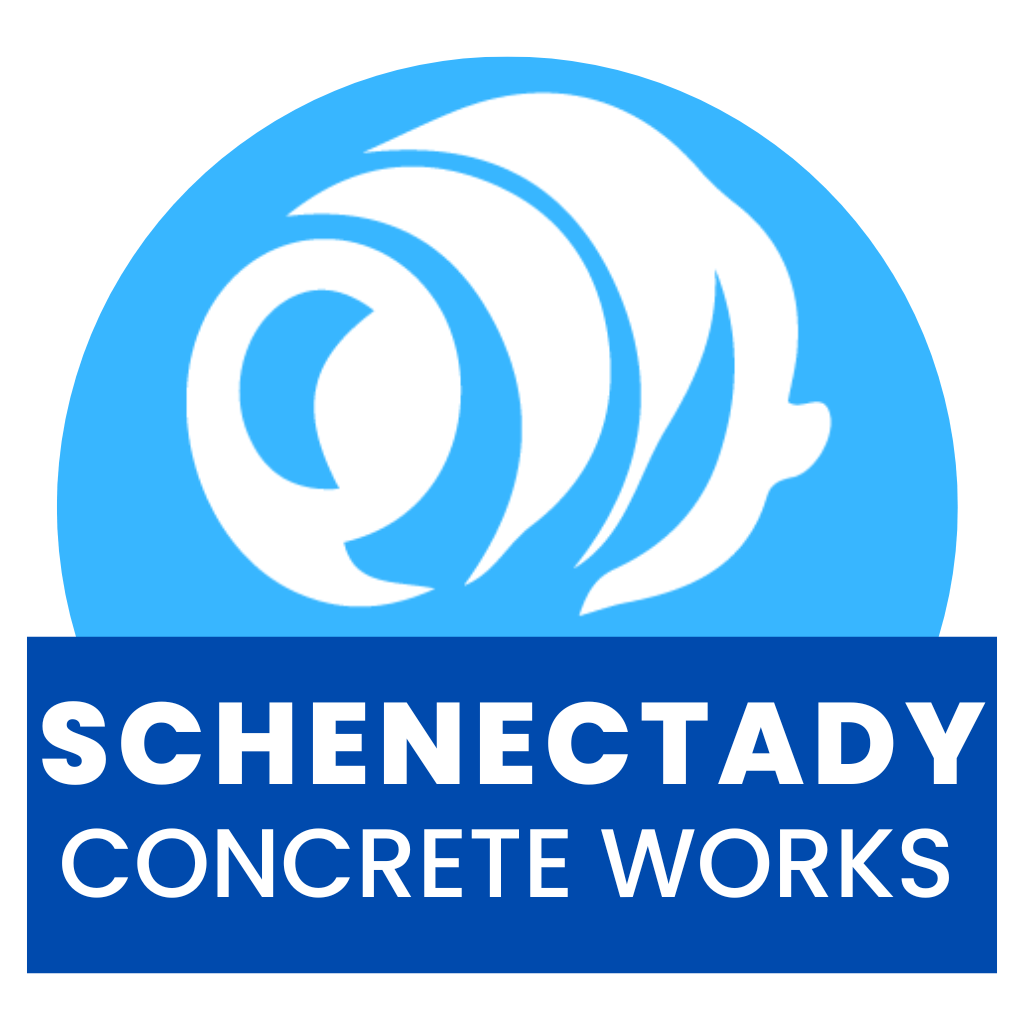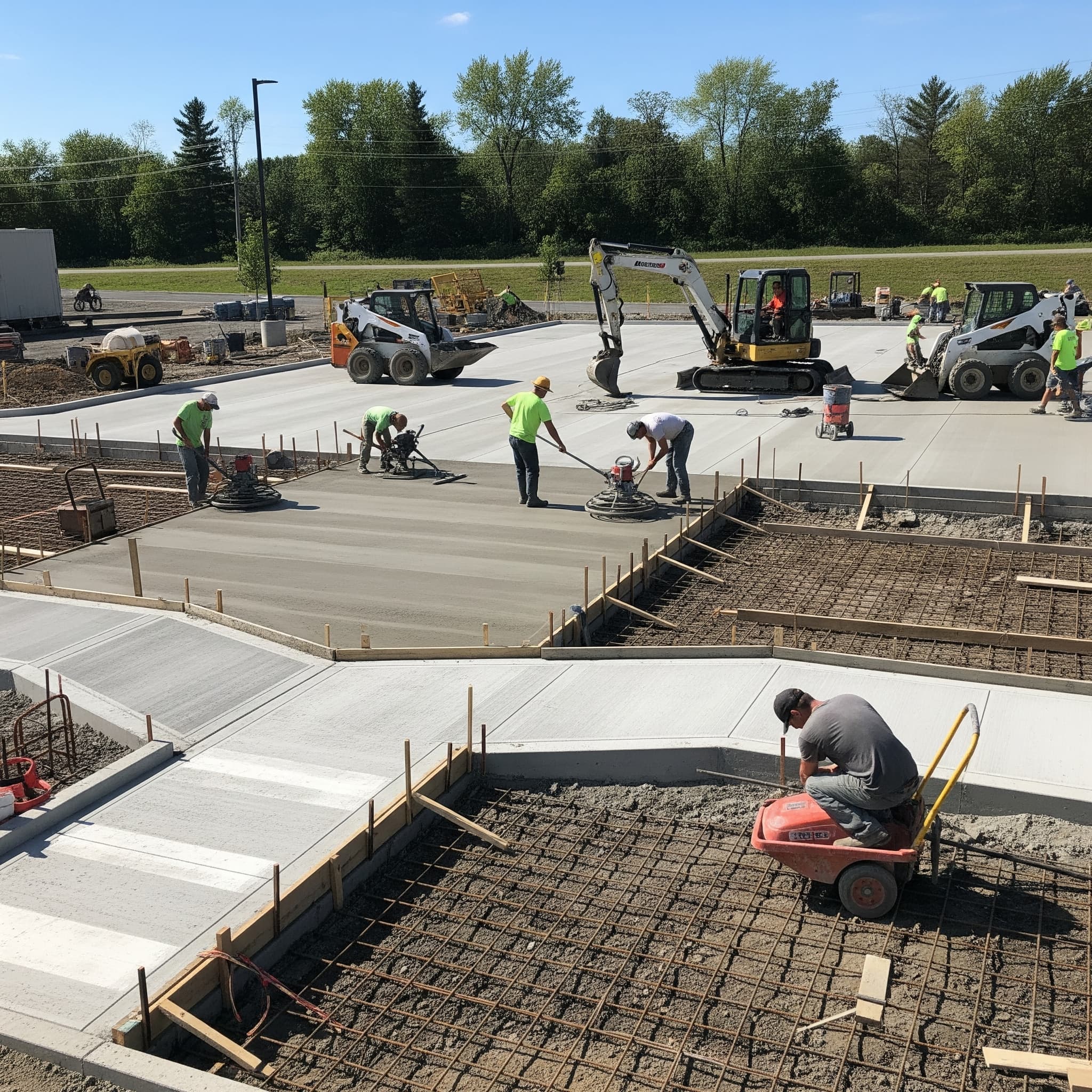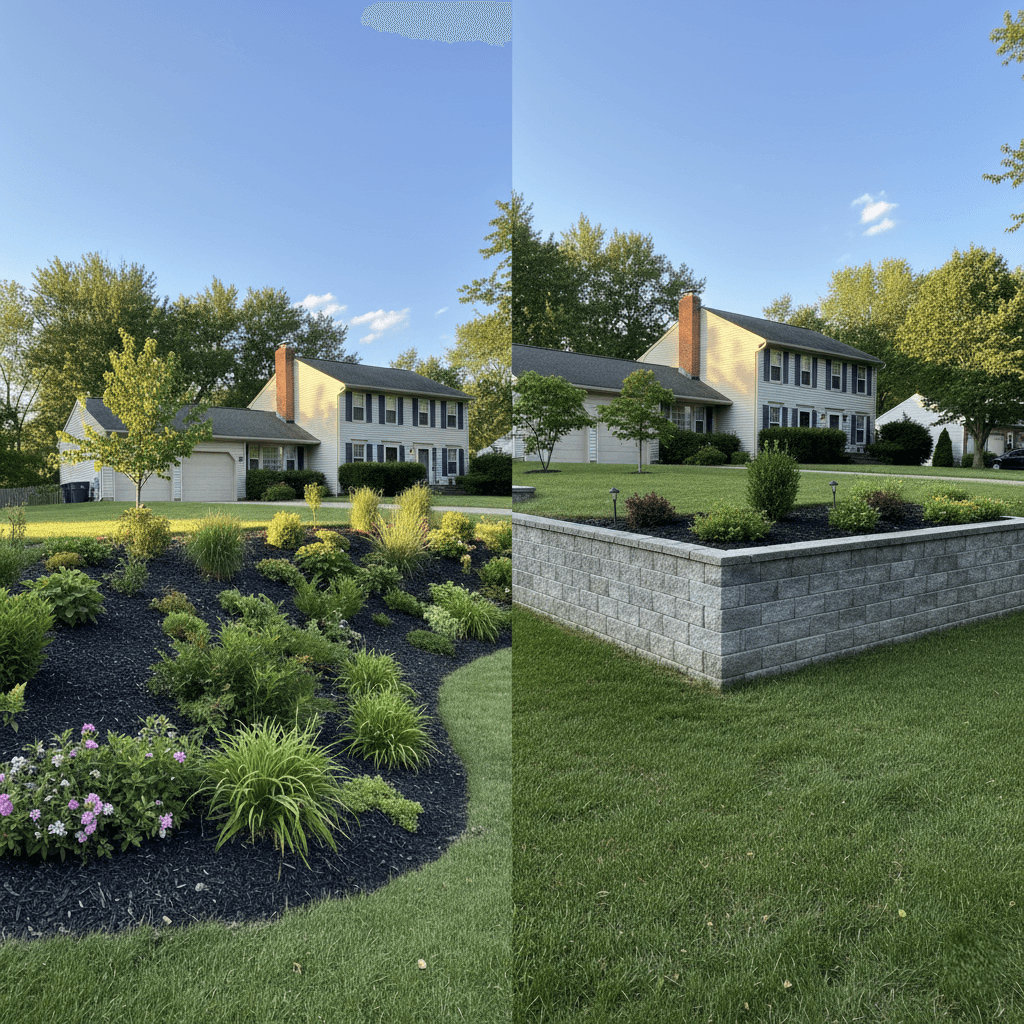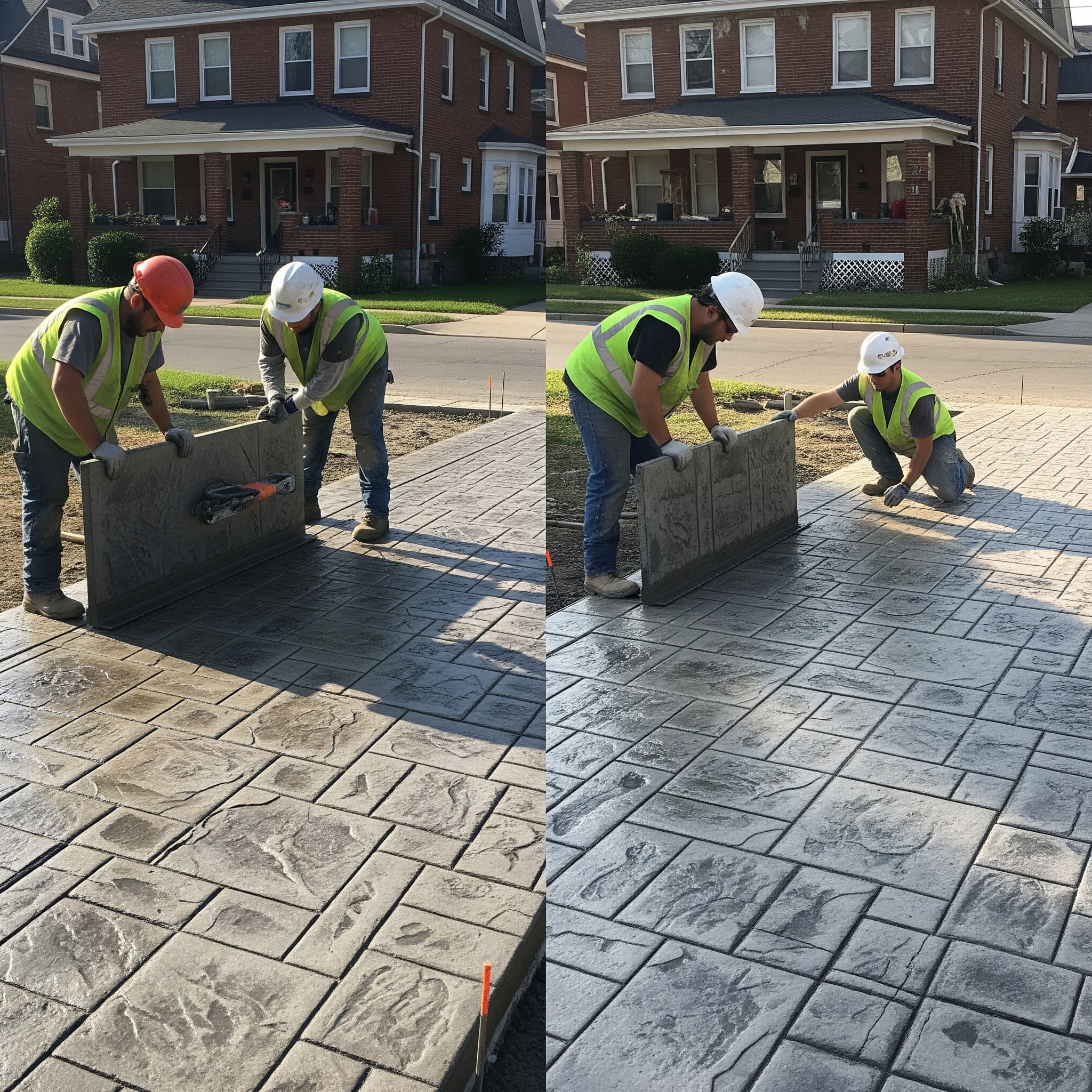
Hiring a Schenectady Concrete Contractor? Ask These 7 Questions
Stamped Concrete Schenectady
Stamped concrete projects in Schenectady require careful planning and execution to achieve beautiful, durable results that withstand our challenging regional climate. Many homeowners encounter disappointing outcomes due to preventable installation errors that compromise both appearance and longevity. Understanding common mistakes helps property owners make informed decisions about contractors, timing, and project specifications. Professional installation becomes especially important given Schenectady’s freeze-thaw cycles, variable weather patterns, and seasonal challenges that affect concrete performance. Avoiding these pitfalls ensures your investment provides lasting beauty and value for decades to come.
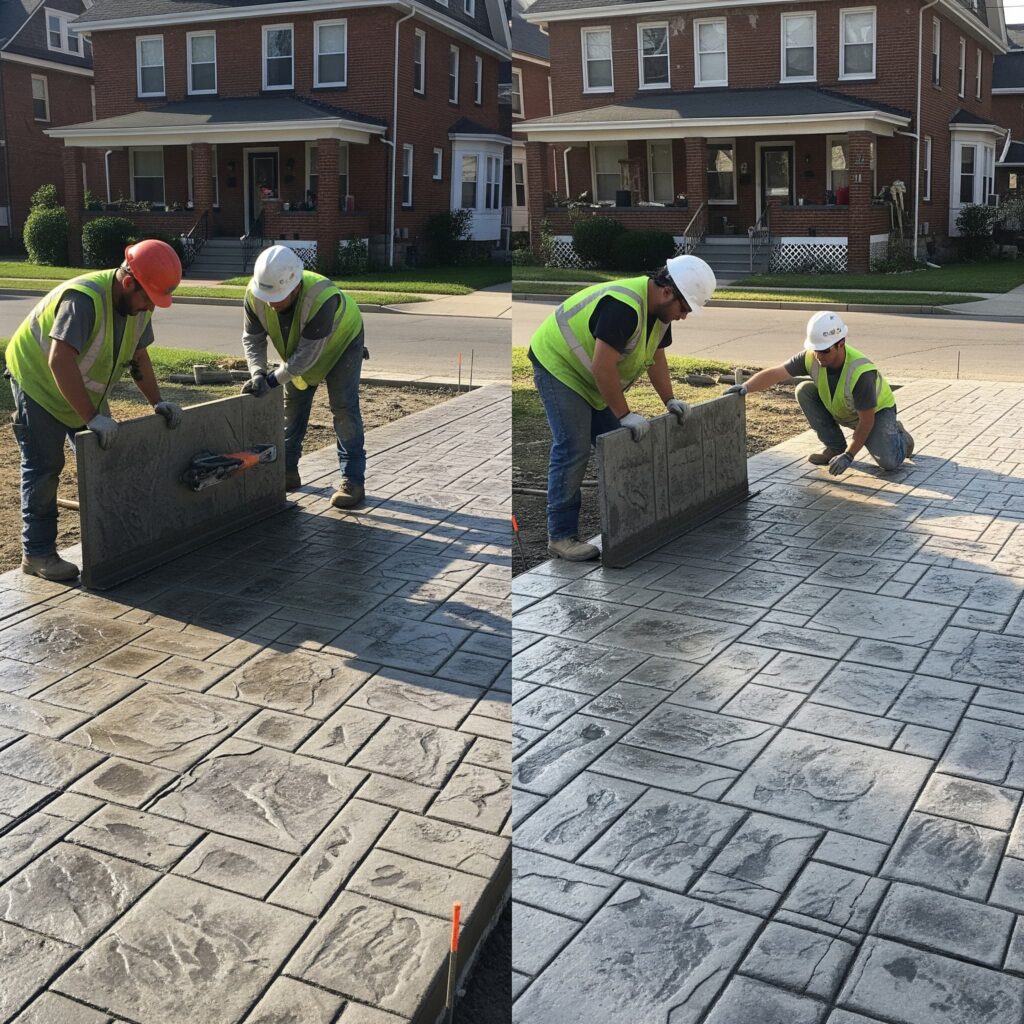
Mistake #1: Inadequate Site Preparation
Poor subgrade preparation represents the most critical error in stamped concrete installations, leading to settling, cracking, and premature failure regardless of surface quality. Many contractors rush this phase to save time, but unstable foundations inevitably cause expensive problems later. Proper excavation requires removing organic matter, achieving uniform compaction, and establishing proper drainage to prevent water accumulation beneath slabs.
Properties throughout Schenectady face unique soil conditions ranging from clay-heavy substrates near the Mohawk River to varied compositions in elevated areas like the GE Realty Plot. Professional soil evaluation determines appropriate excavation depth, base course requirements, and compaction procedures specific to each location. Shortcuts during this phase create problems that surface treatments cannot overcome, making thorough preparation essential for long-term success.
Proper Base Course Installation
Quality-based course materials and installation techniques provide stable foundations that resist settling and frost heave common in our regional climate. Graded aggregate bases require proper thickness, compaction in lifts, and moisture control to achieve the design bearing capacity. Inadequate compaction creates voids that lead to differential settling and surface cracking once loads are applied.
Drainage considerations become critical in Schenectady’s wet climate, requiring proper slopes and potentially subdrainage systems to prevent water accumulation. French drain installation or similar measures protect against hydrostatic pressure that can cause lifting, settlement, or frost damage during the winter months.
Mistake #2: Incorrect Concrete Mix Design
Using inappropriate concrete mixtures compromises both workability during installation and long-term durability in Schenectady’s demanding climate. Standard mixes often lack the air entrainment necessary for freeze-thaw resistance, proper slump for stamping operations, or sufficient strength for anticipated loading conditions. Professional mix design addresses these requirements while providing adequate working time for complex stamping procedures.
Water-cement ratio errors create numerous problems, including reduced strength, increased permeability, and poor surface durability. Excessive water weakens concrete, while insufficient water makes placement and stamping difficult. Air entrainment requirements for freeze-thaw resistance must be balanced with finishing requirements that affect surface texture and appearance quality.
Climate-Specific Mix Requirements
Regional aggregate sources and seasonal placement conditions require mix modifications to ensure optimal performance throughout Schenectady’s temperature variations. Winter placements may require accelerating admixtures or modified curing procedures, while summer work needs retarding agents to provide adequate working time. Local suppliers understand these requirements and can provide appropriate mixtures for specific project conditions.
Fiber reinforcement additions help control plastic shrinkage cracking while maintaining stampability, particularly important for larger installations or challenging weather conditions. Synthetic fibers provide crack control without interfering with stamping operations or surface finishing procedures.
Mistake #3: Poor Weather Timing and Planning
Attempting stamped concrete installation during inappropriate weather conditions leads to surface defects, poor color development, and premature sealer failure. Schenectady’s unpredictable weather requires careful timing and contingency planning to avoid problems. Temperature extremes, precipitation, and humidity variations all affect concrete placement, stamping procedures, and initial curing processes.
Rain exposure during or shortly after stamping can wash away release agents, dilute surface colors, and create texture inconsistencies that remain permanently visible. Professional contractors monitor extended weather forecasts and have protective measures available when conditions become marginal. Rushing projects to meet arbitrary deadlines often results in poor outcomes that require expensive corrections.
Seasonal Installation Considerations
Spring and fall installations offer optimal conditions in Schenectady, avoiding summer heat stress and winter cold weather complications. However, seasonal demand often requires scheduling well in advance to secure appropriate installation windows. Professional contractors understand seasonal limitations and plan accordingly to ensure optimal results.
Cold weather concreting requires specialized procedures, including heated materials, insulated forms, and extended protection periods that increase costs and complexity. Properties near Central Park or other elevated areas may experience different microclimates that affect installation timing and protection requirements compared to river-level locations.
Mistake #4: Improper Stamping Technique and Timing
Incorrect stamping procedures create visible defects, including pattern misalignment, inadequate texture depth, tool marks, and color inconsistencies that detract from overall appearance. Timing becomes critical as concrete must reach proper consistency for stamping while remaining workable for pattern completion. Inexperienced installers often begin stamping too early or too late, compromising final results.
Pattern alignment requires careful planning and execution to avoid obvious seams, particularly important for large areas or complex layouts. Professional installers understand proper overlap techniques, tool rotation procedures, and release agent application methods that create realistic texture appearances. Rushing this process invariably produces substandard results that cannot be easily corrected.
Release Agent Application Errors
Incorrect release agent use causes stamping tools to stick, tear surface textures, or create color variations that appear unprofessional. Too much release agent creates thick buildup that obscures patterns, while insufficient application causes tool adhesion problems. Professional application requires understanding powder distribution, timing, and removal procedures that achieve consistent results.
Color release agents must be applied uniformly to create consistent antiquing effects without blotchy appearances. Weather conditions affect application procedures, requiring adjustments for humidity, temperature, and wind conditions common throughout the Schenectady region during different seasons.
Mistake #5: Inadequate Joint Planning and Installation
Failing to include proper control joints leads to random cracking that destroys stamped patterns and creates maintenance problems. Joint spacing, depth, and timing requirements differ from plain concrete due to decorative considerations and pattern alignment needs. Professional joint design considers slab dimensions, reinforcement details, and anticipated shrinkage patterns.
Isolation joints around fixed objects prevent restraint cracking while maintaining pattern continuity where possible. These details require careful planning during design phases to avoid conflicts between structural requirements and aesthetic goals. Properties in established neighborhoods often have existing structures that complicate joint placement and require creative solutions.
Joint Cutting and Finishing Procedures
Timing joint cutting operations becomes critical with stamped concrete to avoid pattern damage while ensuring effective crack control. Early-entry sawing techniques may be necessary to prevent random cracking before full-depth cuts can be completed. Professional contractors understand equipment requirements and timing procedures for different concrete mixtures and weather conditions.
Joint finishing may require color matching or special treatments to minimize visual impact on decorative surfaces. Caulking compounds or joint sealers help prevent debris accumulation while maintaining appearance quality throughout service life.
Mistake #6: Premature or Improper Sealing
Applying sealers before concrete fully cures traps moisture and creates adhesion problems that cause premature failure. The standard 28-day curing period ensures adequate strength development and moisture evaporation before sealer application. Rushing this timeline to meet project deadlines inevitably creates problems that require expensive corrective work.
Sealer selection affects both appearance and performance, with options ranging from natural-look penetrating products to high-gloss film-forming types. Environmental conditions in Schenectady require sealers designed for freeze-thaw resistance, UV stability, and moderate to heavy traffic exposure. Professional guidance helps match sealer characteristics to specific project requirements and maintenance expectations.
Application Technique and Environmental Factors
Proper sealer application requires appropriate surface preparation, environmental conditions, and application techniques that ensure uniform coverage and optimal adhesion. Temperature, humidity, and wind conditions all affect application success and final appearance quality. Professional application includes surface cleaning, moisture testing, and quality control procedures.
Multiple thin coats typically provide better results than single thick applications, requiring an understanding of recoat timing and compatible products. Equipment selection and application techniques significantly affect final appearance uniformity and long-term performance characteristics.
Mistake #7: Ignoring Drainage and Slope Requirements
Inadequate surface drainage creates standing water that damages sealers, promotes staining, and accelerates freeze-thaw deterioration. Proper slope design ensures water movement away from structures while maintaining acceptable walking surfaces and appearance quality. Minimum slopes must be balanced against pattern requirements and accessibility considerations.
Schenectady’s precipitation patterns require drainage systems capable of handling intense rainfall events and snowmelt conditions. Poor drainage planning creates maintenance problems and may compromise structural performance over time. Professional design considers site conditions, municipal drainage requirements, and long-term performance expectations.
Integration with Landscape and Hardscape Elements
Drainage design must coordinate with existing landscaping, building locations, and utility installations to create comprehensive site management systems. Conflicts between drainage requirements and decorative goals require creative solutions that maintain both function and appearance. Properties in the Stockade Historic District may face additional constraints requiring specialized approaches.
Subsurface drainage systems may be necessary in areas with poor soil drainage or high water tables. French drains, catch basins, or other collection systems protect stamped concrete investments while managing site water effectively throughout varying seasonal conditions.
Mistake #8: Choosing Inexperienced Contractors
Selecting contractors based solely on low pricing often results in substandard installations that require expensive corrections or complete replacement. Stamped concrete requires specialized knowledge, equipment, and experience that general concrete contractors may lack. Quality installations demand understanding of materials, techniques, and timing that comes only through extensive training and experience.
Proper contractor evaluation includes reviewing portfolios, checking references, and verifying insurance coverage and licensing requirements. Local building department requirements and permit procedures vary, making experience with Schenectady regulations valuable for smooth project completion. Professional contractors provide warranties and ongoing support that protect homeowner investments.
Verification and Quality Assurance
Professional contractors maintain detailed documentation, including material certifications, installation procedures, and quality control records that demonstrate compliance with specifications. They understand troubleshooting procedures for weather-related problems and have contingency plans for unexpected conditions that may arise during installation.
Ongoing education and certification programs help qualified contractors stay current with evolving materials, techniques, and industry standards. Professional associations provide resources and support that benefit both contractors and their clients through improved installation quality and problem resolution capabilities.
Protecting Your Stamped Concrete Investment
Avoiding these common mistakes requires careful planning, professional execution, and realistic expectations about timelines and costs. Quality stamped concrete installations provide decades of beauty and functionality when properly designed and installed. Investment in professional services typically proves more economical than attempting corrections after problems develop.
Regular maintenance, including appropriate cleaning, sealer reapplication, and minor repairs, helps preserve appearance and performance throughout service life. Understanding maintenance requirements during planning phases helps homeowners budget for long-term care while maximizing return on their decorative concrete investments.
At Schenectady Concrete Works, we understand the importance of avoiding these common installation mistakes and provide expert guidance throughout every phase of stamped concrete projects. Our experience with local conditions, materials, and techniques ensures beautiful, durable results that enhance property values while providing years of maintenance-free enjoyment for homeowners throughout the greater Schenectady area.
